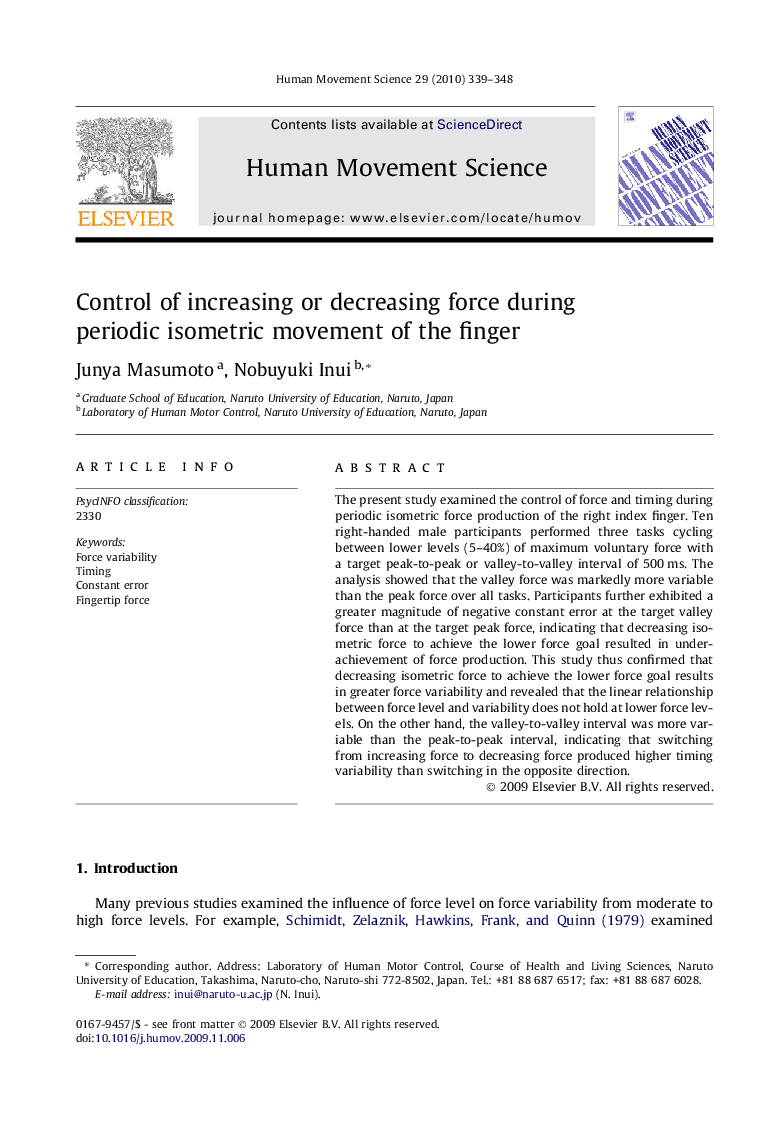| Article ID | Journal | Published Year | Pages | File Type |
|---|---|---|---|---|
| 928679 | Human Movement Science | 2010 | 10 Pages |
The present study examined the control of force and timing during periodic isometric force production of the right index finger. Ten right-handed male participants performed three tasks cycling between lower levels (5–40%) of maximum voluntary force with a target peak-to-peak or valley-to-valley interval of 500 ms. The analysis showed that the valley force was markedly more variable than the peak force over all tasks. Participants further exhibited a greater magnitude of negative constant error at the target valley force than at the target peak force, indicating that decreasing isometric force to achieve the lower force goal resulted in underachievement of force production. This study thus confirmed that decreasing isometric force to achieve the lower force goal results in greater force variability and revealed that the linear relationship between force level and variability does not hold at lower force levels. On the other hand, the valley-to-valley interval was more variable than the peak-to-peak interval, indicating that switching from increasing force to decreasing force produced higher timing variability than switching in the opposite direction.
